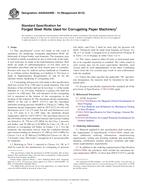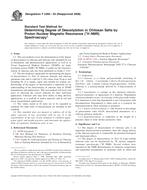Click here to purchase
This guide covers the deactivation of fluid catalytic cracking (FCC) catalyst in the laboratory as a precursor to small scale performance testing. FCC catalysts are deactivated in the laboratory in order to simulate the aging that occurs during continuous use in a commercial fluid catalytic cracking unit (FCCU). Deactivation for purposes of this guide constitutes hydrothermal deactivation of the catalyst and metal poisoning by nickel and vanadium. Hydrothermal treatment is used to simulate the physical changes that occur in the FCC catalyst through repeated regeneration cycles. Hydrothermal treatment (steaming) destabilizes the faujasite (zeolite Y), resulting in reduced crystallinity and surface area. Further decomposition of the crystalline structure occurs in the presence of vanadium, and to a lesser extent in the presence of nickel. Vanadium is believed to form vanadic acid in a hydrothermal environment resulting in destruction of the zeolitic portion of the catalyst. Nickel’s principle effect is to poison the selectivity of the FCC catalyst. Hydrogen and coke production is increased in the presence of nickel, due to the dehydrogenation activity of the metal. Vanadium also exhibits significant dehydrogenation activity, the degree of which can be influenced by the oxidation and reduction conditions prevailing throughout the deactivation process. The simulation of the metal effects that one would see commercially is part of the objective of deactivating catalysts in the laboratory.
Product Details
- Published:
- 03/01/2013
- Number of Pages:
- 5
- File Size:
- 1 file , 82 KB
- Redline File Size:
- 2 files , 180 KB


